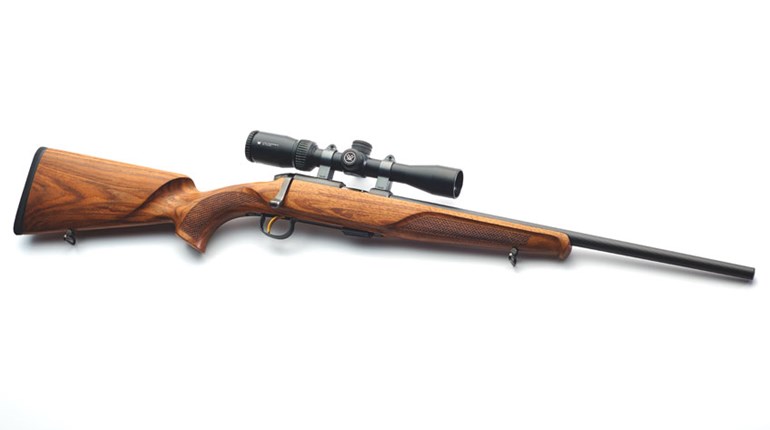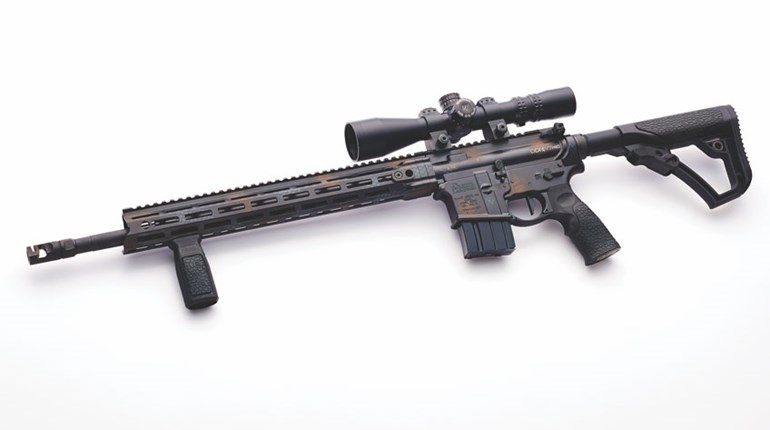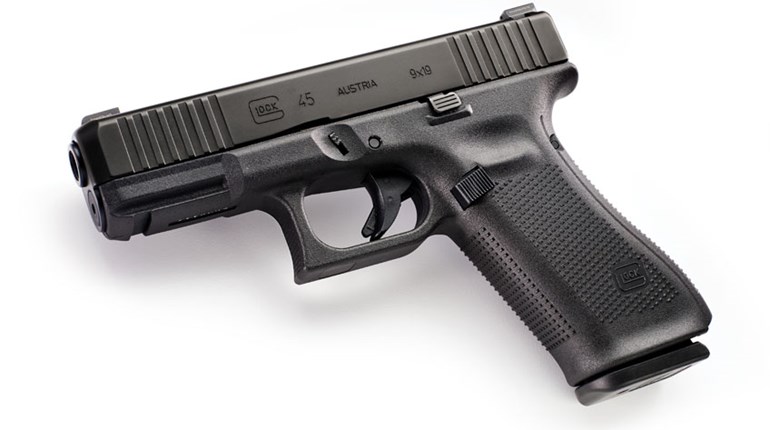
We start Carry Life with a proviso: We don’t think we’re stealing what we call the “Five-Skill Drill” from anyone. If this proves wrong, we apologize to the true originator from the outset. Whatever the source, it’s a good one in ways that will prove obvious.
It’s intended as a partial cure for almost anyone (outside of a few very fortunate and highly skilled pros) who doesn’t get to practice as much as they’d like; there’s a premium on both range time and ammunition resources. The Five-Skill Drill is an attempt to balance those two “big hitters” against a classic bugaboo of getting better at almost anything—the temptation to work on too many things at once.
A little good news here: The five skills aren’t likely to cover new ground, even for the newish Carry Lifer. Simply, they weave training on each with the others in a way that limits over-tasking—the most frequent saboteur of learning. Instead, the drill moves from one skill to another while keeping the overhead of round count and setup low.
For clarity, uniform definitions of the five skills helps:
Draw/Presentation
This is the process of getting your firearm from its carry mode into an aiming/firing position. Naturally, this will be heavily dependent on the mode in which you carry. Belt carry will have different imperatives and methods from purse, pocket or ankle carry, for instance, but those are beyond the scope of this drill.
In general terms, however, all draws/presentations have key and common elements. Whatever the movement from carry to completed presentation, grip must be secure at the beginning of any draw motion; sweeping/flagging of yourself or others with the muzzle should be eliminated (not always possible with shoulder holster, cross draw and purse carry); and the “mount” of the trigger should occur only when you’re on target. (Reprise grip architecture here, mechanics here and draw starting here.)Simply, they weave training on each with the others in a way that limits overtasking—the most frequent saboteur of learning.
Remember that legal considerations bear here as well: In many—indeed most—places, you can’t legally draw to “warn off” an attack. This is wide of the purposes of the drill, too, but essential to keep in mind as part of the larger Carry Life context. Staging the draw is an intermediate state worth considering.
Sight Alignment
For most, this is a relative no-brainer: Notch–and-post sight alignment is widely understood, but don’t take it for granted, or “sketch it in,” either. The tops of front and rear sights are level (though some three-dot systems actually require the top of the front to be “swamped” so the dots align instead), and the post has an even amount of light on either side indicating it’s centered in the notch. For non-military/LE shooters, it is almost always the desired end-state of presentation.
Whether or not your sights are regulated to “six-o’clock hold,” wherein the target is “floated” just above the post, or to point-of-aim equals point-of-impact, is best determined by shooting rested groups, though again, this is a little beyond our scope. The most common problem here is the propensity to bring the head down to the sights, and not the sights up to the eyes. This isn’t faster despite how it feels, and puts two things in motion rather than one: keep the head as still as possible, though not craned back away from the firearm.
Red-dot or reflex sights make this lack of head movement even more beneficial and crucial: Chasing that dot is really slow.
The Shot
If your other prep is good, you’re now at your natural point of aim, “proofed” by sight alignment on a valid target, and presssssing the trigger is all that remains. Up to the limit of the capacity of your cylinder or magazine, you may repeat the sight alignment/shot cycle over and over again.
Proper transitions—optimized movement from one target to the next—are a sophisticated skill, and good ones won’t come easily.We’d also posit that the “shot” portion of the Five-Skill Drill is a “threefer.” As you’ll see, it requires controlled pairs and a precision shot, otherwise known as a “failure to stop,” or Mozambique, drill.
Reload
At some point, you’ll want to reload your handgun. Duh. But unless you’re watching competitive, military or law-enforcement shooters training, you often see this done in a manner completely separated from target engagement, and at a pace that reflects no urgency whatsoever. This is a habit to lose in a hurry, and that’s why it is part of this drill.
If “hurry” is a foreign notion here, we’d argue that you need to put any practice using the Five-Skill Drill on (temporary) hold. There are lots of wrong ways to do a reload, and some of them are unsafe. If you’ve got doubts about yours, find a qualified instructor: He or she should be able to demonstrate a shot-to-shot reload with a semi-automatic in under two seconds, and under four with a speed reloading-provisioned revolver.
Transition
Proper transitions—optimized movement from one target to the next—are a sophisticated skill, and good ones won’t come easily. Notions of what constitutes “proper” differ, but the variations are mainly doctrinal. At the simplest, a good transition involves recovering the firearm from a predecessor shot as the eyes move to a new target, where good grip/stance bring the pistol to the eyes again, and a subsequent shot follows immediately on rapid proofing of the sight alignment. You can often spot these by cadence in fellow shooters: Ba-blam, pause, ba-blam, pause, ba-blam is the error-prone “double-tap,” versus boom-boom, boom-boom, boom-boom that sounds more like a string of six than three pairs.
The drill itself—as we promised—is simple, both in terms of setup and execution. Outdoors we suggest two separate targets, though one works fine if your range confines you to a lane. Indoors, one will work for the same reason. The target itself can be almost any silhouette type, though we think the Gunsite Silhouette is the best in all senses, followed by variations on the USPSA/IPSC “Metric” target. The crucial differentiator is a large “A” zone, and a small “A” zone.
Six shots comprise the normal course of fire. We’re agnostic on starting hand position, and would recommend, in fact, that you vary it: Drop from surrender, “fight,” and hands naturally at sides all have their merits. We run this with something in our hands at the start, too, since this is a real-world possibility. Cover garment is optional (especially at first), but should be added at some point.We get it if this seems a little mundane, but remember the result—five essential skills, simple set-up/tear-down, and survivable ammunition consumption.
On the beep, draw/present and fire a controlled pair into the large “A” zone, then transition to the small “A” of the same target, and fire a single shot. Perform a reload, and re-engage in the same order (two to large “A”, then one to the small “A”). And that’s it. If you’re on two targets, each should have three hits. If you’re training on a single target, that is six hits. Either way, the goal is a six “A” count: four in the large “A” zones, two in the small. Only “A” hits count.
We shoot this at three, five, seven and 10 yards and have, over the years, developed rough standards. A solid shooter should be getting the hits in six seconds at three yards, seven seconds at five, eight seconds at seven, and 11 seconds at ten yards. If you’re fairly accomplished, you’ll shave this to 4.5, 5.5, 6.5 and 9 respectively. Add a second to each of these when drawing from cover. Remember, only “A” hits count. Misses or hits in lower-scoring areas are translated, “Do it again.”
We get it if this seems a little mundane, but remember the result—five essential skills, simple setup/teardown, and survivable ammunition consumption. Two boxes of ammo, after all, will give 16 reps; not a bad number. As with most drills, we’d recommend roughly 80 percent throttle to start, with careful attention to merging each element into the next, then push until you fail.
Think, too, about what the regimen compels—secure grip to good sight picture, sight “tracking” from shot one to shot two, movement of the eyes first to the precision shot, followed by the hands/pistol, proofing of sight picture, and shot three. A nice, high reload keeps that pistol toward the threat, followed by regrip and representation, sight picture, shot, track, shot, transition, proof and shot. Presto, all five skills.
Some addenda: Note that six-shot revolvers as well as many smaller carry pistols can play on a relatively equal footing here (though reloads are more demanding), and we know of several practitioners who still make our time hacks regularly. Five-shooters should omit shot five (second large “A” shot).
While the three-, five- and seven-yard distances are within the realm of the defensible “stop the attack” Carry Life type of shots, the 10-yarder is decidedly not. So why use it? We go “old school” here: The three- and five-yard iterations are cake if you can make the 10-yard version happen.
We mentioned that shot order could be varied, but recommend putting this off until you’re close to the initial standards. The rationale is transparent: The identified skills need to come first, but when they do, break this or any other pattern in your training. Except as such breaks start to corrode basic skills (like unrestricted “hammer” strings by folks who haven’t yet mastered this), versatile, durable, keep-the-gun-running technique is vastly preferable to meeting any numerical standard, however desirable or impressive.
Last, and especially for the three- and five-yard editions, make sure your target is positioned so shots strike the berm or bullet trap. Generally, this means positioned somewhat below eye level, or very close to your backstop. As always, you’re responsible for where those bullets come to rest.
Now go out and train these five crucial skills, and Carry on.
































